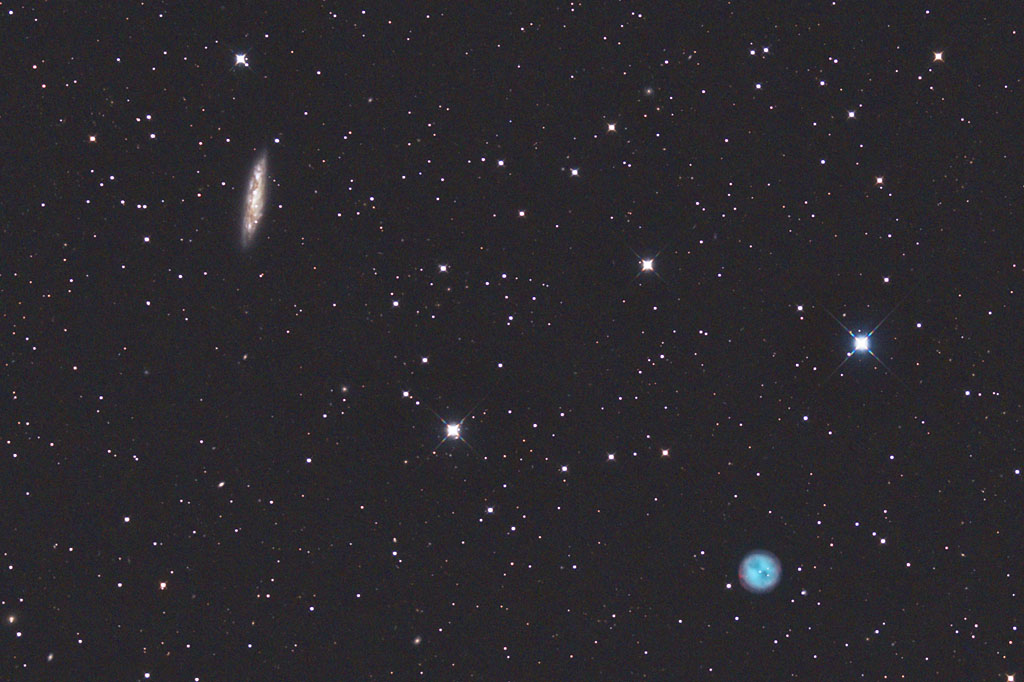Daily Image
12-03-2007A Galaxy and a Planetary Nebula
| Submitter: | Albert van Duin |
| Description: | This is an interesting pairing - a galaxy (M108) and a planetary nebula (M97) in Ursa Major. The Owl Nebula M97 is one of the fainter objects in Messier's catalog, discovered by Pierre Méchain on February 16, 1781. It got it's nickname from Lord Rosse beacause it resembles the round head of an owl, including two dark "eyes". In 1866, William Huggins recognized its nature as a gaseous nebula from the observation of its spectrum, where he discovered two spectral lines. M97's distance is not certain, estimates range from 1,300 to 12,000 light years. But it is certainly within our galaxy. M97 is one of the more complex planetary nebulae. Its appearance has been interpreted as that of a cylindrical torus shell (or globe without poles), viewed oblique, so that the projected matter-poor ends of the cylinder correspond to the owl's eyes. This shell is enveloped by a fainter nebula of lower ionization. The mass of the nebula has been estimated to amount 0.15 solar masses, while the 16 mag central star is believed to be of about 0.7 solar masses. Its dynamical age is about 6,000 years. (from Stephen J. Hynes, Planetary Nebulae). Méchain discovered M108 3 days after M97 on February 19, 1781. M108 is a Sc galaxy, which is receding at 772 km/sec. According to Brent Tully, it is about 45 million light years distant, and a member of the Ursa Major cloud, a loose agglomeration of galaxies. All stars in this picture belong to our own Milky Way galaxy, but beware, there are also lots of distant galaxies in the field. This image was made from Beilen with a 20cm ASA Astrograph and a Canon 350D DSLR on January 22, 2007. The total exposure time was 1 hour. More images can be found at: http://www.astropix.nl |
| Copyright: | Albert van Duin |
| Tweet |  |
